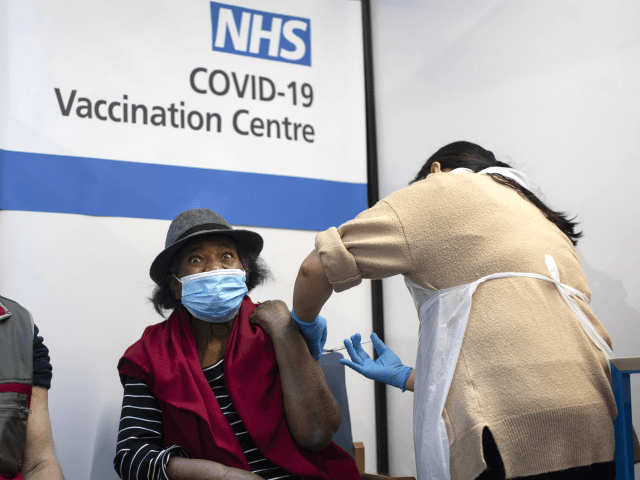A U.S. Food and Drug Administration (FDA) advisory panel on Thursday voted to recommend the approval of the emergency use authorization (EUA) request for the anti-Chinese coronavirus vaccine developed by American biotechnology company Moderna, bringing the inoculation closer to becoming the second approved in just days.
FDA Commissioner Stephen Hahn will ultimately decide whether to accept the recommendation, but the agency has signaled that it will issue the EUA for the vaccine.
FDA officials will likely follow the non-binding recommendations of the agency’s Vaccines and Related Biological Products Advisory Committee, which voted 20-0 with one abstention in favor of the Moderna inoculation. The panel, made up of vaccine and infectious disease experts, was the same one that recommended approval last Thursday of the November 20 EUA request made by Pfizer-BioNTech, which developed the first approved vaccine in the U.S.
If the process followed with Pfizer is any indication, Dr. Hahn will officially authorize the vaccine approved by the panel tomorrow, making Moderna the second inoculation backed by the influential committee in about a week.
Yahoo Finance reported Thursday evening:
Moderna’s (MRNA) COVID-19 was recommended for emergency use authorization (EAU) Thursday evening by an advisory committee to the U.S. Food and Drug Administration (FDA) in a majority vote, with just one abstention.
The vote brings the company one step closer to becoming the second authorized vaccine in the U.S. The advisory panel voted to allow use in adults 18 and older, which includes first-priority frontline health workers and nursing home residents.
Until recently, there were no vaccines for any coronaviruses in humans.
“This is somewhat of a historic event,” Dr. Peter Marks from the FDA reportedly said during the meeting Thursday, noting that it was a historic occasion to hold two vaccine advisory meetings just one week apart.
U.S. President Donald Trump’s multibillion dollar Operation Warp Speed, a private-public effort involving civilian federal entities and the Pentagon, all focused on developing a vaccine in record time and delivering them across America, has paid off. It has made the development of vaccines and therapeutics possible.
There are at least two more candidates in the last stage of the three-phase clinical trial process in the U.S. alone. Moreover, the World Health Organization (W.H.O.), a United Nations body, was monitoring the development of more than 55 candidates in clinical development and more than 165 in pre-clinical development across the world as of Thursday.
The FDA officially approved the EUA by American pharmaceutical company Pfizer and Germany’s BioNTech last Friday, a day after the FDA’s advisory panel assessed Pfizer’s emergency use application.
Unlike the Moderna vaccines (approved for patients 18 or older), the Pfizer one is approved for patients 16 and up.
Moderna applied for a EUA on November 30, ten days after Pfizer.
If Moderna follows the Pfizer approach, the pharmaceutical company will start delivering the doses Sunday.
By Monday, some Americans could be getting their first shot of Moderna, much like what happened with the Pfizer vaccine this week. Both vaccines require two doses. The first delivery of the Pfizer vaccine was about three million doses.
“Operation Warp Speed officials said Moderna was able to produce more doses than Pfizer and therefore more vaccines,” Yahoo Finance noted. “Nearly six million doses will be shipped once the vaccine is authorized.”
The Moderna vaccine has reportedly shown promise in reducing some asymptomatic transmission of the virus.
Pfizer vaccines have to reportedly be kept at minus 70 degrees Celsius, colder than winter in Antarctica, to transport. However, Moderna has asserted that its vaccine is also required to be frozen, but only at minus 20 Celsius, reflecting the temperature of regular freezing.
Early this month, a U.S. Centers for Disease Control and Prevention (CDC) panel advised, not mandated, states to administer the first batch of shots to healthcare employees and others vulnerable to contract the disease, including residents and staff of nursing homes and other long-term care facilities.
It is up to the states to follow the recommendations. Some have already deviated and plan to include inmates among those who will receive the vaccine first.
According to the Trump administration, the vaccine will be available to all Americans by next June and to the world with the help of the others developed in other countries by early to mid-2022.

COMMENTS
Please let us know if you're having issues with commenting.